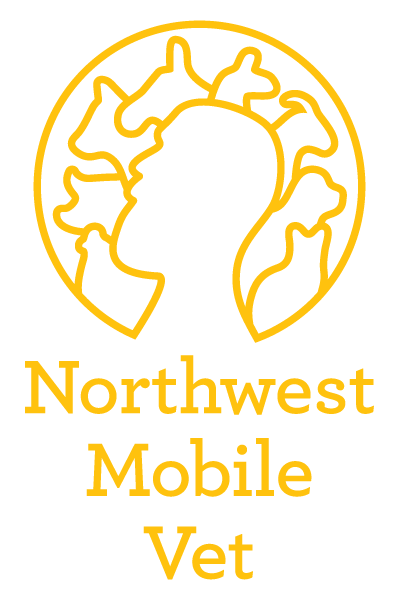Emergency Information
When urgent health issues arise, our dedicated team is ready to respond swiftly to cater to your animals' needs. From injuries to sudden illnesses, we prioritize rapid, effective care to stabilize and treat your animals, ensuring their safety and well-being. Leveraging our mobile veterinary capabilities, we bring state-of-the-art medical intervention right to your doorstep, minimizing stress for both you and your animals. Timely attention is crucial, and our team is committed to providing the expertise and compassion your animals deserve in their hour of need.
-
1. Reduced Activity: The animal may become lethargic, spending more time lying down or standing still. Movement may be limited or hesitant.
2. Decreased Appetite: There might be a noticeable reduction in food or water intake, often leading to weight loss over time.
3. Social Withdrawal: Animals typically reduce social interactions with herd mates. They might isolate themselves from the group.
4. Altered Sleep Patterns: Sleep patterns may be disturbed, with the animal sleeping more during the day or showing restless behavior at night.
5. Decreased Grooming: The animal might show less interest in self-grooming, leading to a unkempt appearance.
6. Fever: The body temperature might rise as a defense mechanism against pathogens.
7. Increased Sensitivity: The animal may show heightened responses to pain or external stimuli, or may exhibit reduced pain sensitivity in some cases.
8. Changes in Posture: Hunching, head hanging low, or adopting unusual postures may indicate discomfort or pain.
-
1. Inability to urinate or defecate: An animal's visible struggle or inability to urinate or defecate, which can be indicative of obstructions or other internal issues.
2. Acute Lameness: Sudden onset of limping, unwillingness to bear weight, or apparent pain in any limb.
3. Respiratory Distress: Labored breathing, persistent coughing, or nasal discharge indicating respiratory complications.
4. Colic Symptoms: Signs of abdominal pain, such as rolling, pacing, looking at the flanks, and decreased appetite.
5. Birthing Complications: Difficulty during labor, prolonged delivery time, or any distress shown by a birthing animal.
6. Bloat: Swelling of the abdomen, especially in ruminants like goats and cows, indicating gas buildup and requiring prompt intervention.
7. Toxic Plant Ingestion: Suspected consumption of hazardous materials, like plastic, metal, or toxic plants (rhododendrons), which can obstruct or harm the digestive tract.
8. Sudden Blindness or Eye Injuries: Rapid onset of visual impairment or any apparent injury to the eye, such as cloudiness, tearing, or trauma.
9. Severe Diarrhea or Dehydration: Profuse watery stools, which can lead to rapid dehydration, electrolyte imbalances, and systemic complications.
10. Neurological Symptoms: Uncoordinated movements, tremors, head tilting, or seizures indicating potential neurological issues.
11. Heat Stress or Heatstroke: Signs of excessive panting, drooling, lethargy, or collapse, especially during hot weather, indicating the animal's inability to regulate body temperature.
12. Swollen Udder or Mastitis: Inflammation or infection of the mammary glands, accompanied by pain, heat, and possibly changes in milk production or quality.
13. Acute Laminitis: Sudden onset of foot pain, often shown by a shifted weight-bearing stance, indicative of inflammation in the hoof's laminae.
14. Hemorrhaging or Excessive Bleeding: Whether due to injury, post-surgical complications, or unknown reasons, any severe blood loss that poses an immediate risk.
15. Traumatic Injuries: Abrasions, deep cuts, or wounds caused by accidents, animal attacks, or entanglements in fences or equipment.
16. Choke: Difficulty swallowing, drooling, or distress when eating, suggesting an obstruction in the esophagus, commonly seen in llamas, alpacas, and cows, but can occur in other animals.
-
Please contact us at 503.765.6702 and leave a voicemail if we do not answer. If it is after hours, the on-call veterinarian should return your call within 15 minutes. If not, please call again and leave another voicemail. Please know that we may be at another emergency or out of cell service and will return your call as soon as possible.
If possible, please place animal by itself in a clean, dry, freshly bedded, warm stall with access to food and water. This is the best step as you await our arrival.
-
Small Animal: Should you face an emergency during our regular business hours, we encourage you to contact us immediately. While our mobile practice is equipped to handle various situations, certain emergencies may require specialized equipment and hospitalization available at dedicated emergency clinics. In such cases, we will promptly direct you to a trusted local small animal emergency center for optimal care. If you are having a small animal emergency outside of our normal business hours, please contact your local small animal emergency clinic. Due to our mobile nature, we do not have the staff to deal with small animal emergencies after-hours.
